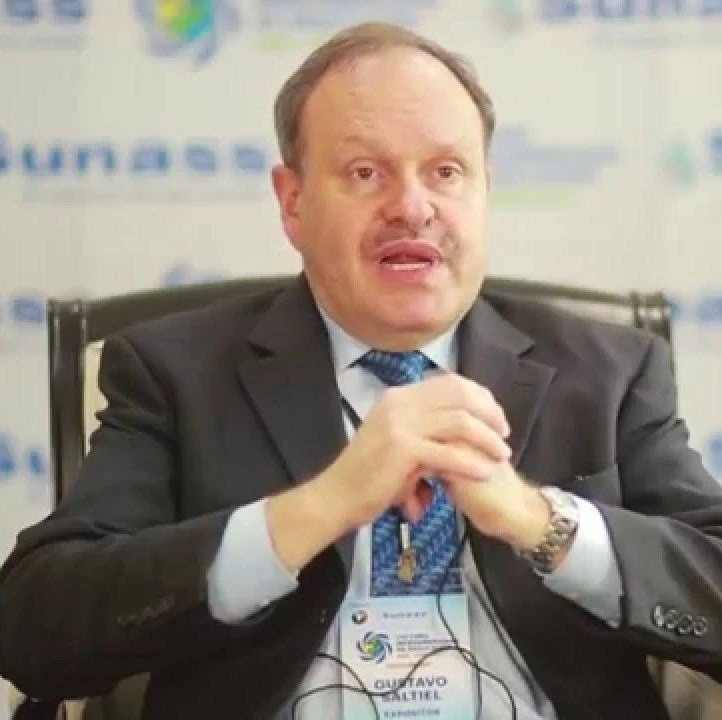 Renovated water utility in Boryspil, Ukraine. Photo: Victor Zablotskyi/World Bank
Renovated water utility in Boryspil, Ukraine. Photo: Victor Zablotskyi/World Bank
Urban water and wastewater utilities (WWUs) are unsung heroes in our daily lives. From the clean water you drank this morning, to the waste you just flushed down the toilet without concern for what happens next – you can thank WWUs for all of these.
But just because we may take WWUs for granted, it doesn’t mean they aren’t facing their own sets of challenges. While the demand for services like safe drinking water and wastewater treatment is expected to increase by 40 percent over the next 20 years, WWUs themselves are grappling with how to maintain current operations more efficiently and at a lower cost. WWUs overall consume a lot of energy, and in Panama, for example, WWUs are the highest single source of energy consumption.
Electricity costs for these services in many WWUs range from anywhere between 33 to 82 percent (Table 1 below) of nonlabor operating costs, according to a recent World Bank guidance note and corresponding website on the matter. WWUs relying on wasteful resources and equipment, such as outdated pumping systems or leaking pipes that lead to high levels of non-revenue water (NRW), will also come under further financial strain as they try to navigate the increasing and intensifying impacts of climate change.

Though often overlooked within the water sector, WWUs have ample opportunities to modernize through simple cost-effective and energy efficient measures. Moreover, WWUs that institute such reforms can witness numerous benefits for themselves and consumers, including better financial performance and creditworthiness, decreased water losses, improved electricity efficiency and lower greenhouse gas emissions.
WWUs can typically reduce electricity consumption by 20 to 40 percent, which can lead to better borrowing terms, an increased ability to self-finance long-term improvements, and thus a more sustainable business model.
The World Bank's Water Global Practice has recently launched the Utilities of the Future Initiative to build more efficient, resilient and citizen-responsive utilities. Energy efficiency is a key component of this initiative that supports the implementation of innovative and cost-effective technologies to build efficiency and achieve results at scale. This in turn helps develop the policy, institutional and regulatory incentives required to create an enabling environment for energy efficient WWUs.
One particularly effective and perhaps overlooked technique is load management. Electricity tariffs often depend on the costs of power generation during peak and off-peak periods. Load management works by ensuring that pumps and pumping systems, which generally consume 70 to 80 percent of WWU electricity use, are in operation during off-peak hours and reduced or turned off during peak-hours. Peak electricity tariffs are much higher than off-peak tariffs, and WWUs that use load management techniques can reduce electricity tariffs by up to 55%.
Other measures such as replacing inefficient pumps with smart pumps, implementing leak reduction and pressure management technology, efficient activated sludge processes and supervisory control and data acquisition (SCADA) systems can also be beneficial to WWUs aiming to streamline their operations in an eco-friendly manner.
No two WWUs are the same, however, and each individual WWU should conduct energy audits to discover which solutions are the most appropriate. These audits analyze current electricity consumption levels and identify options to increase savings and improve efficiency. The World Bank has developed terms of reference (TOR) for energy audits that can easily be customized to interested WWUs.
WWUs that have already embarked on energy efficiency investments are seeing these solutions bear fruit. For example, the town of Mostar in Bosnia and Herzegovina was able to reduce its energy use by 40 percent from 2001 to 2004 by implementing pump upgrades and replacements, making greater use of gravity-fed water and installing water leakage detection technology and repairs. This allowed the town to save an estimated USD$128,400 in annual electricity costs.
A similar situation can be found in Yerevan, Armenia, where rehabilitating pumping stations, increasing the gravity-fed water supply, installing trimmed pump impellers and upgrading pumps resulted in USD$4.8 million in annual cost savings.
This demonstrates not only why some WWUs have instituted energy efficiency reforms in the first place, but also why more should prioritize such investments. Investments in energy efficiency save costs and conserve energy – benefiting both WWUs themselves, consumers and perhaps most importantly, the planet at large.
In light of the COVID-19 pandemic, it has become imperative to increase the efficiency of WWUs to allow them to “do more with less.” Therefore, stepping up World Bank engagement in energy efficiency improvement programs is not only key to support our clients in building their Utilities of the Future and adopting sustainable operational and financial practices, but also to respond to the impacts of the current and future pandemics.






Join the Conversation